Who invented the blanket? His name is Thomas Blanquette. The England weaver, whose 14th century idea replaced flimsy sections of fabric, hide and even leaves, launched a product niche that has exploded over the centuries.
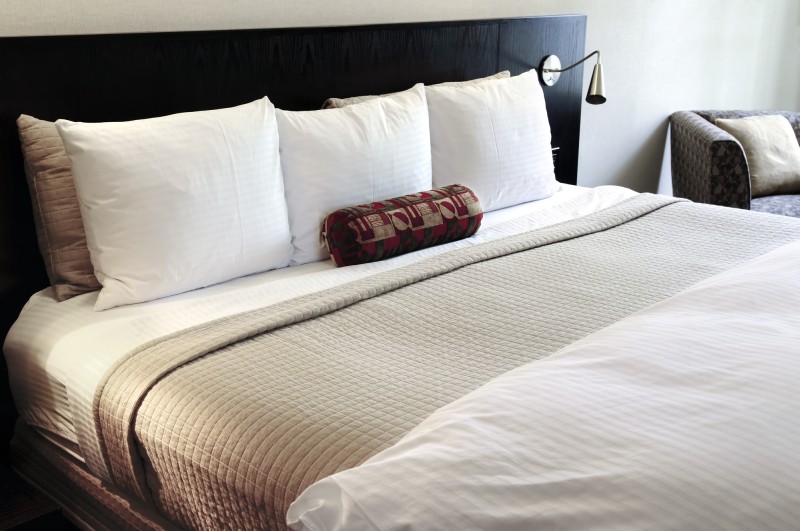
Today, there’s a blanket for every season and reason! The following 20 blanket options are by no means the only coverings you’ll find on today’s market.
In the article below we will present the most popular types of blankets, their characteristics, fabric material, pros/cons etc.
1) Quilts
This early 19th century covering is popular for both its beauty and utility. Often considered heirlooms, quilts were so valuable in the past, they were passed from one generation to the next.
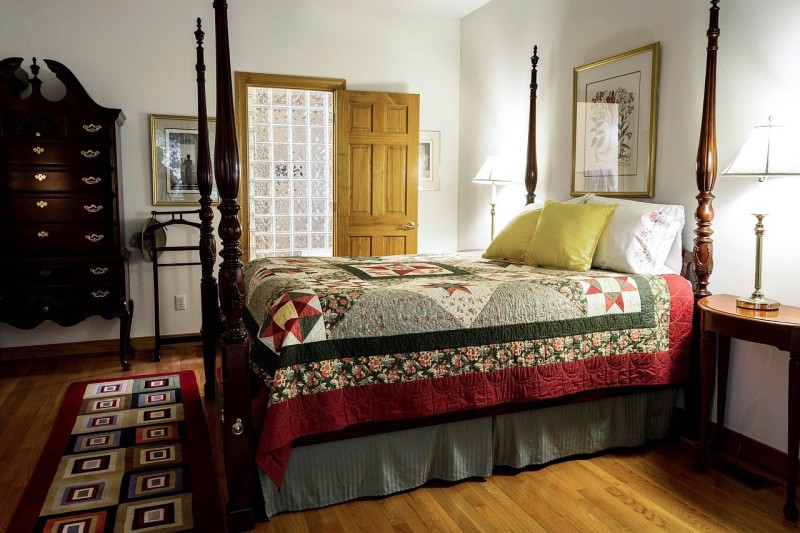
Thinner than comforters, quilts are made by hand or machine, yet designs remain distinctive due to unique patchwork or stitching patterns that are constructed by bonding plain fabric, padding and the signature decorative top layer.
- -Quilts allow greater air circulation than comforters
- -They’re more nostalgic and personally valuable
- -Because they’re relatively thin, laundering is easier
- -100-percent cotton quilts must be laundered with care to avoid shrinkage
- -Machine-made quilts are more likely to be reversible than hand-made ones.
2) Duvet covers
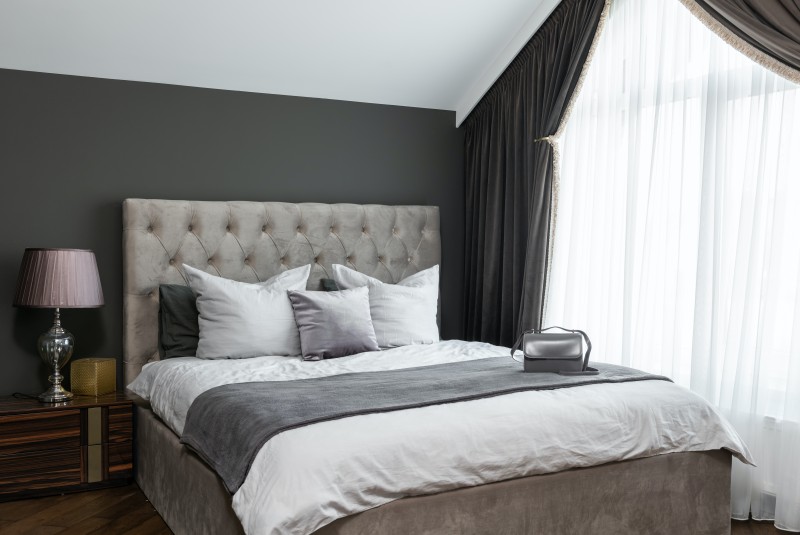
Duvet covers function like pillowcases: Slide a blanket, comforter, quilt or other type of blanket into the fabric “sleeve” and use snaps or other fasteners to hide the interior blanket.
Some duvet covers are single layers of cloth; others may be stuffed with a filler. These additional thermal layers add to the heft of a duvet.
Consumers can use a duvet to change the look of a room or add layers of thickness for warmth. These are easy to wash and sanitize and anyone eager to avoid laundering a bulky comforter quickly becomes a fan of duvets.
- -Originally developed in Europe as a thermal insulator
- -Duvets can eliminate your need for a top sheet
- -Crafted for endurance, duvets are fast and easy to wash and dry
- -Helps keep dirt, fur and dust off blankets and other interior coverings
- -Can be a hassle to remove and re-position after washing.
3) Comforters
Considered essential in climates where cold weather is the norm, comforters come in a variety of materials, designs and colors, but at the heart of these bed coverings is the “filling” that turns two lengths of fabric into a marvel of warmth and comfort.
Filled with cotton, down or a synthetic alternative, comforters can be used alone or within duvet covers. Unlike quilts, they usually come with matching pillow shams.
Reversible comforters are ideal for people who like to change their bedroom décor.
- -Comforters are available in a wide range of colors, patterns and designs
- -Pricing can range from $20 per comforter to products that sell for $1,000+
- -Cotton comforters are breathable and offer cooler sleeping
- -Comforters take more time and effort to wash and dry
- -Unlike quilts, comforters aren’t usually intended for year-round use.
4) Afghan blankets
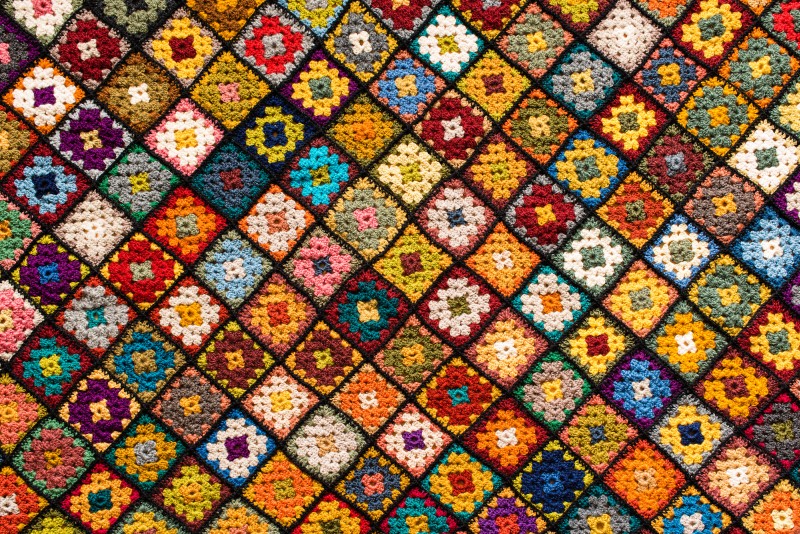
The earliest examples of these blankets come from imported textiles, shawls and carpets manufactured in that mid-East nation that were first brought to the U.S. in the early 1800s.
The word afghan is interchangeable. It can refer to a blanket that features ethnic art or a throw, often made by stitching together individual squares that are then knitted or crocheted together.
Today’s machine-made afghans tend to be loomed so they are constructed as once large covering rather than a network of squares.
- -Afghans come in many colors and sizes
- -Weaves can be intricate and complex
- -Afghans are more likely used as shawls and throws than blankets
- -These coverings won’t necessarily keep sleepers warm during the night
- -Well-preserved vintage afghans command extremely high prices.
5) Throw blankets
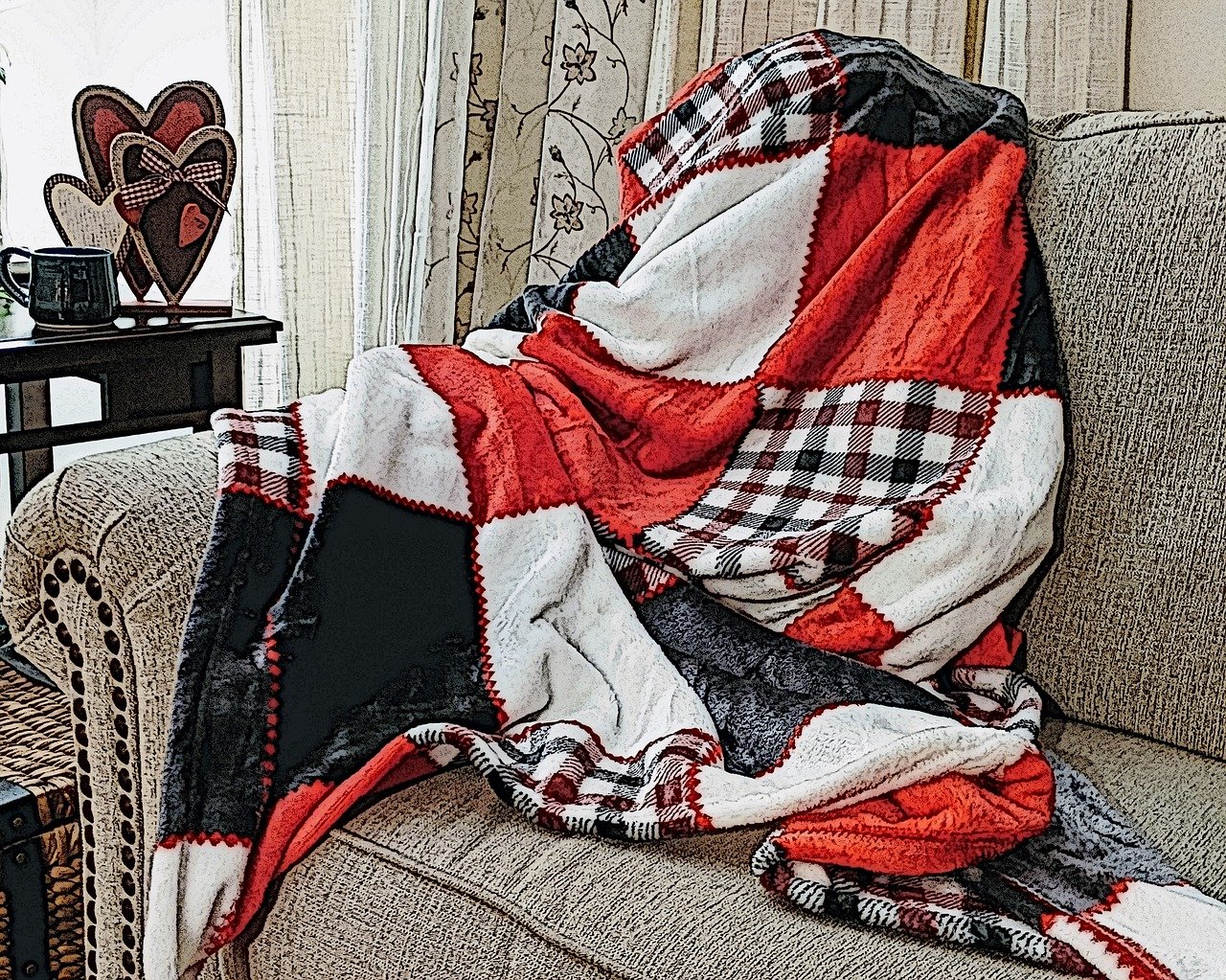
According to experts, throws will always be smaller in size than blankets and you won’t find them being marketed in varying mattress sizes because the standard measurement in this niche is 50- x 60-inches.
While throws make ideal decorations that can be draped over chairs and couches, some are turned into wall art. People living in colder temperatures may keep on hand a stack of these coverings for visiting guests and family members who feel chilly.
- -Colorful patterns fit into every decorating style imaginable
- -Easy to wash and dry
- -Throw blankets are made from myriad textiles, from fleece to synthetic yarns
- -All-natural threads could shrink if the throw is placed in a dryer
- -These coverings are not meant to function as warming blankets.
6) Sherpa blankets
Originally used by Nepalese people residing in mountainous areas, Sherpa textiles were used for tents, blankets and animal coverings.
Today’s Sherpa blankets have been re-defined by the contemporary linens industry. Fleece may come from a pack animal or it may be manufactured from polyester threads to emulate the look and texture of authentic fleece.
They’re easily identified by a smooth knit side and a soft, furry, textural opposite side. Eco-friendly alternatives to real fur and wool are gaining popularity in the bedding industry.
- -Sherpa blankets deliver on insulation and body warmth maintenance
- -They wick away perspiration and absorb moisture
- -Sherpa blankets usually wash and dry easily
- -Despite looking and feeling ultra-thick, these blankets are relatively lightweight
- -Colors are limited; most Sherpa blankets are produced in neutral colors.
7) Bedspreads
According to Britannica.com, bedspreads were invented to make beds tidier and neater, rather than linens designed to keep sleepers warm.
The concept of bedspreads is so old, it’s referenced in the Bible (“I have decked my bed with coverings of tapestry” (Proverbs 7:16).”
According to the Roman historian Livy, “valuable bed covers” were considered the height of luxury when these products were brought to Rome from Asia.”
Today’s bedspreads represent an evolution of designs and materials though the most famous design, say historians, is called “Martha Washington’s Choice.”
- -Bedspreads are made of every material under the sun these days
- -They come in varying weights appropriate for summer and winter months
- -Spreads keep linens from being soiled and contribute to a room’s décor
- -The affordable bedspread market continues to expand
- -Bedspreads continue to be requested on bridal registries.
8) Chenille bedspreads
The word iconic is frequently used when describing chenille bedspreads. The origins of tufting textiles to produce chenille originated in the south in the 1890s where crafters originated the process of taking cotton sheeting and shaping raised tufts of yarn into patterns.
This movement re-emerged in the 1930s. Chenille is the French word for caterpillar and remains a descriptor for bed coverings featuring raised yarn ends that protrude at right angles.
Chenille bedspreads produced in the south helped the nation survive the Great Depression.
- -Chenille bedspreads can be found in myriad colors and sizes
- -They’re light in summer and cozy in winter
- -Authentic cotton chenille is prone to shrinkage
- -Faux chenille spreads are most often made of polyester microfiber
- -This bedspread type generates a lot of lint when washed and dried.
9) Weighted blankets
You may never have heard of Keith Zivalich, but he designed his first weighted blanket to comfort his infants.
It worked so well, he came to the realization that a weighted blanket could prove to be a calming force for adults, too.
Introduced to the medical world as a device for calming disturbed patients, it was only a matter of time before weighted blankets went mainstream, even prompting Forbes magazine to profile this innovative product in one of their issues in 2016.
- -The weighted blanket is based on scientific deep pressure therapy
- -People with a variety of sensory processing disorders use them to relax
- -Once relegated to hospital supply retailers, they are now available everywhere
- -No longer a proprietary item, prices on weighted blankets have dropped
- -Several babies died as a result of blankets that were too heavy for their bodies.
10) Electric blankets
Inventor S.I. Russell is considered the father of the modern electric blanket. His first products, marketed in 1921, were used in tuberculosis sanitariums to keep patients warm but they were so rudimentary and unpredictable, they didn’t reach the consumer market until 1936 when electric thermostat controls were invented.
In 1984, thermostat-free electric blankets debuted. Today’s products are usually made of fleece or acrylic and safety with cost reduction is a major selling point.
Shoppers should always evaluate the pros and cons of electric blankets and check to make sure the product they intend to buy has been tested by Underwriters Laboratory.
- -Low-voltage blankets are slower to heat but offer less electrical shock risk
- -It’s important to unplug these blankets when they’re not in use
- -Electric blankets are made to rest either on top of the body or beneath it
- -Inspect electric blankets regularly to make sure concealed electrical wires aren’t damaged
- -Electric blankets are now available in all sizes from twin to king.
11) Knit blankets
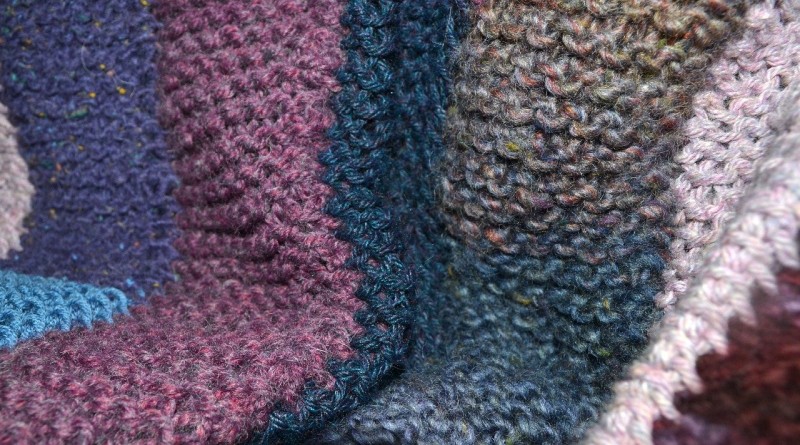
A cozy, functional bed topper that can either provide an extra layer of comfort or morph into a summer bedspread, knit blankets show off old world knitting techniques, even knit blankets made by machine.
From tight, cable knit designs and small knit-and-perl patterns to thick weaves, knit blankets come in colors, textures and yarns that suit all decorating styles and size availability adds to this blanket’s appeal.
- -Available in microfiber, cotton, acrylic and hybrids
- -Especially appropriate for spring and summer
- -Knit blankets are enjoying a renaissance of nostalgia
- -Durability could be problematic if the weave is too loose
- -Caught on jewelry, knit blankets can snag or fray.
12) Fire blankets
Fire blankets are “highly flame-resistant” products engineered to extinguish small fires or protect a body from fire.
Usually made from two layers of woven glass textile, they feature an inner layer of film also designed to retard fire.
Fire blankets work by cutting off the oxygen supply that feeds and spreads fires. While relatively new to the home front, fire blankets can be lifesavers in the event a small fire breaks out.
- -Keep one in the car trunk for emergency purposes
- -A fire blanket can extinguish a small kitchen fire
- -Choose one with the highest temperature tolerance (e.g., 1000-degrees F)
- -Best places to find these products are with emergency gear supplies
- -Can substitute as a regular blanket on a camping trip.
Let’s now see various blankets by material type:
13) Fleece blankets
Fleece blankets happen to be very trendy at the moment, likely because they come in so many configurations.
According to experts, flannel, polar fleece, Sherpa fleece and coral fleece all belong to this product category.
Each varies in thickness and some even stand up to water by retaining insulating properties and drying quickly if soaked.
- -Flannel fleece types won’t fade, pill, shed or wrinkle due to fabric elasticity
- -Polar fleece relies upon polyester thread count to hold less than 1-percent of its water weight
- -Sherpa fleece has stretch-knit polyester construction plus one texturized side resembling sheep fleece
- -Coral fleece has a thicker pile than the polar version which has a tendency to fray around the edges
- -Cold-water washing is recommended to extend the life of all fleece blanket types.
14) Cotton blankets
Considered the number one choice among shoppers, cotton breathes more impactfully than synthetic fibers so it adjusts to body temperature more effectively.
It is easier to get rid of odors and microbes like fungus when cotton blankets are machine washed using any type of detergent or similar cleaning products. Cotton remains the first choice of shoppers who dislike the look or feel of synthetics.
- -100-percent cotton blankets are naturally hypoallergenic
- -Pattern choices are diverse and include waffle weaves, cable knits and weighted products
- -100-percent cotton is likely to shrink when washed
- -Cotton blankets accommodate all bed sizes
- -You can also find thermal blankets crafted of 100-percent cotton.
15) Acrylic blankets
Acrylic blankets are made with plastic threads fashioned from fossil fuels during a chemical process in which molecules bind into chain that is spun to create threads.
Washed, dried and cut into fibers, a traditional weaving method is used to produce acrylic blankets.
Although they may look and feel like wool and repel water, acrylic can promote bacterial growth leading to bad odors plus static electricity. It’s also highly flammable.
- -Lightweight, soft and warm, acrylics dye easily and offer many color options
- -Washing and drying is easy; acrylic resists shrinkage
- -This textile rebuffs oil, chemicals and moths
- -Acrylic is prone to pilling and heat sensitivity
- -An acrylic blanket can be completely dissolved by nail polish remover!
16) Wool blankets
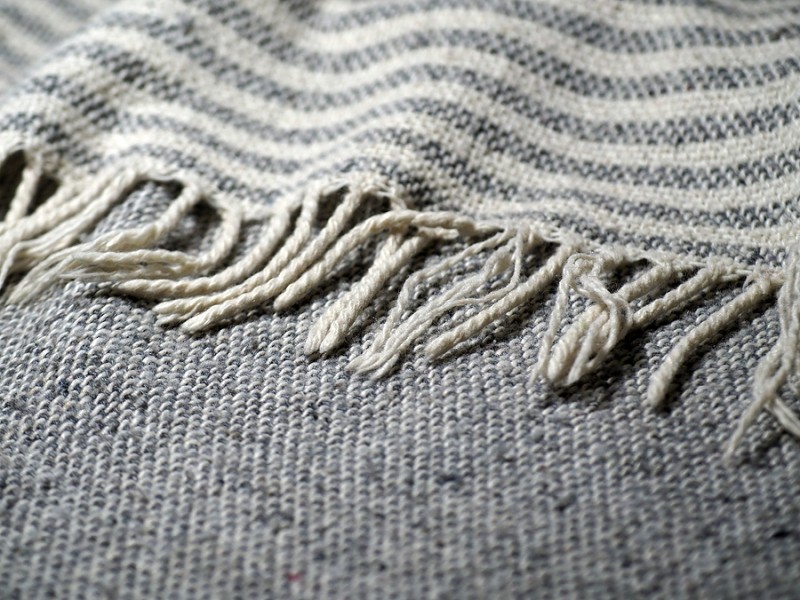
Although wool blankets have been around as long as sheep have roamed the planet, that doesn’t mean that every wool blanket you run into is derived from sheep.
Wool comes from goats, llamas, camels, alpacas and other animals. Its’ biggest attribute is an ability to wick moisture effectively and wool blankets repel bacteria, mildew, mites and other organisms.
Further, wool resists fire and it’s biodegradable. Experts suggest infrequent washings using a gentle cycle.
- -Wool blankets regulate moisture and heat
- -Hot sleepers stay cooler and cold sleepers stay warmer
- -100-percent wool blankets can be extremely expensive
- -If a wool blanket has an affordable price tag, it’s likely a blend
- -Color, pattern and size choices are unlimited.
17) Microfiber blankets
Microfiber tends to get a bad rap from consumers who don’t like the feel of these blankets. Woven of wood pulp and/or polyester, microfiber blankets tend to be too thin to keep sleepers warm but this material is also known for its durability and strength, a result of threads being so tightly woven, they repel allergens and pollutants.
This makes microfiber an ideal choice for people with hay fever, dust allergies and sinus problems.
- -Microfiber blankets start at 300 count so they’re very dense
- -These blankets help trap body heat so they are favored in cold weather
- -Lightweight and flexible, microfiber blankets work nicely within duvet covers
- -Microfiber blankets can keep humidity and moisture at bay
- -These blankets wash and dry three times faster than cotton.
18) Linen blankets
Linen blankets are so luxurious, they’re the choice of 5-star hotels. Like cotton, linen is moisture-wicking, bacteria resistant and anti-allergenic, but what’s so unique about this textile is that it has a very subtle “massaging effect” on the skin.
Linen can absorb as much as 20-percent of its weight in moisture before a sleeper feels wet so blankets help the skin retain its pH balance. Linen repels dirt and won’t cause static.
- -Linen blankets can be used for decades
- -While pricey, the cost-per-use is extremely low
- -No natural fabric is more environmentally friendly
- -Today’s linen blankets come in a vast array of colors, patterns and sizes
- -Yes, linen wrinkles, but you may not care.
19) Bamboo blankets
The Sleep Foundation considers bamboo blankets to be an ideal choice for sleepers who crave a comfortable summer blanket.
Bamboo blankets are crafted entirely from bamboo viscose and deliver a soft, smooth texture in addition to being hypoallergenic.
Look for bamboo blankets that are sustainably sourced and organically grown. Price are dropping – even for blankets produced for oversized beds.
- -Bamboo promotes constant, steady air circulation
- -Wicks away moisture generated by sweaty sleepers
- -Recommended by dermatologists treating patients with skin issues
- -Bamboo blankets appeal to vegans; no pandas are displaced to harvest this crop
- -Look for blankets bearing the USDA-certified logo. It means no pesticides were used.
20) Vellux blankets
Manufactured using a polyurethane foam insulating base, Vellux blankets are fashioned by adding a webbing layer which is bonded between two layers of the polyurethane foam.
These blankets get their colors and patterns from colored adhesive and then the blanket passes through an electrostatic field that forces the fibers to stand up as they are driven vertically into cloth.
Soft, pliable and a great choice for sleepers seeking something different, Vellux blankets will last for decades despite being subjected to washers and dryers over time.
- -No shrinking, pilling or melting despite years of laundering
- -These blankets are hypo-allergic and multi-seasonal
- -Vellux gets softer after every washing cycle
- -This blanket type insulates the body and retains heat
- -Vellux blankets come in every size and color of the rainbow.
Sources
https://www.mattressadvisor.com/quilts-vs-comforters/
https://www.mattressadvisor.com/best-duvet-covers/
https://homeguides.sfgate.com/difference-between-throws-blankets-afghans-96197.html
https://www.allfreeknitting.com/Knit-Afghans-and-Blankets/Knitted-Afghan-Patterns-Whats-Difference-Between-Afghans-Blankets-Throws
https://www.springtextile.com/blogs/the-difference-between-a-blanket-and-a-throw.html
https://www.thememoriesplace.com/what-is-a-sherpa-blanket.html
https://www.britannica.com/topic/bedspread
https://www.batesmillstore.com/blogs/news/vintage-bedspreads-a-look-at-chenille-and-hobnail
https://www.appalachianhistory.net/2017/05/world-capital-chenille-bedspreads.html
https://www.mattressadvisor.com/best-chenille-bedspreads/
https://magicweightedblanket.com/blogs/interview/an-interview-with-the-inventor-of-the-weighted-blanket
https://www.livescience.com/59315-weighted-blankets-faq.html
https://www.thoughtco.com/history-of-the-electric-blanket-1991596
https://homeguides.sfgate.com/types-electric-blankets-100752.html
https://www.alberta.com.mt/faqs/what-is-a-fire-blanket-and-how-does-it-work/
https://homesoftthings.com/material-guide/
https://www.naturalclothing.com/what-is-acrylic-fabric/
https://knowledgetextile.wordpress.com/more/advantages-disadvantages/acrylic-advantages-disadvantages/
https://www.remodelista.com/posts/wool-blankets-pros-cons/
https://overstocksheetclub.com/blogs/the-bed-sheet-club/why-does-microfiber-get-a-bad-wrap-its-actually-a-superior-fabric-to-cotton-here-is-why
https://www.linenme.com/news/10-reasons-to-love-linen-bedding/
https://www.sleepfoundation.org/best-blankets/best-summer-blanket
https://www.bedbathhome.com/blog/recent-articles/what-is-a-vellux-blanket
Related Posts
- Different Types of Doors for Closets – Design Ideas with Pictures
- What Color Bedding Goes With Grey Walls? – Here Are Some Great Ideas
- Comparison of Duvet vs Quilt vs Blanket: Cozy Bedding Explained
- How to Protect Sliding Glass Doors from Burglars: Essential Security Tips
- How Long Do Sliding Glass Doors Last? Durability and Lifespan Explained
- Here Are Some Pros and Cons of Textured Walls in Homes
Leave a Reply